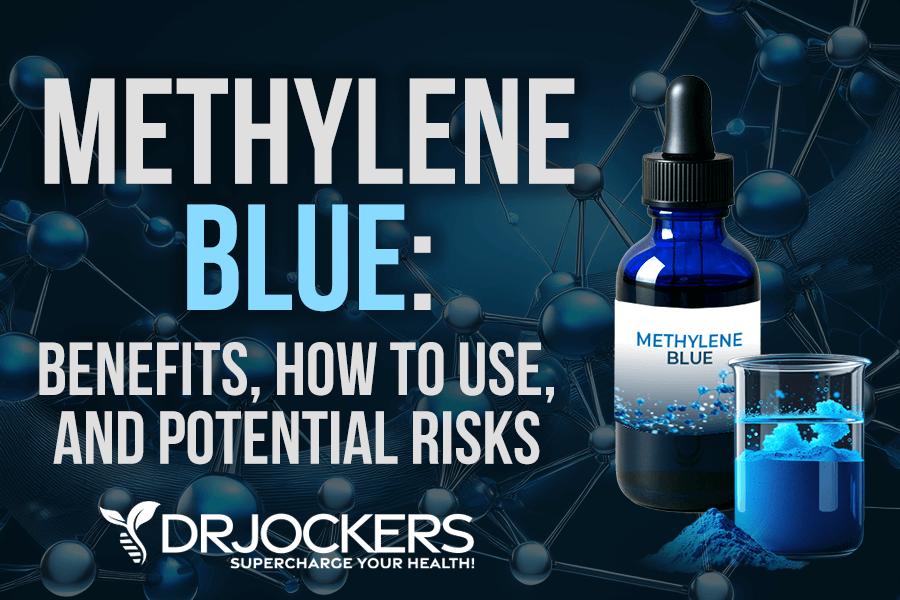 Methylene Blue: Benefits, How to Use, and Potential Risks
Methylene Blue: Benefits, How to Use, and Potential Risks
Methylene blue is a versatile synthetic compound with various applications for chemical and biological experiments, diagnostics, and medical uses. Its potential health benefits include antioxidant support, neuroprotective properties, wound healing, skin health support, longevity, and anti-aging.
Personally, I have yet to use methylene blue, and I prefer using spirulina, which is a natural alternative I discuss near the end of this article. With that said, I wanted to study and understand how methylene blue works and the potential benefits, risks, and best sourcing and doses used for optimal results.
In this article, you will learn about methylene blue. I will discuss the FDA-approved uses and understand the benefits of methylene blue. You will learn how to use methylene blue and why it may be beneficial to combine it with red light therapy.
I will discuss the potential risks and side effects of methylene blue. I will share how to pick the best sources and recommend a product I trust. I will also share how spirulina is a natural alternative for those concerned about taking a synthetic pharmaceutical.
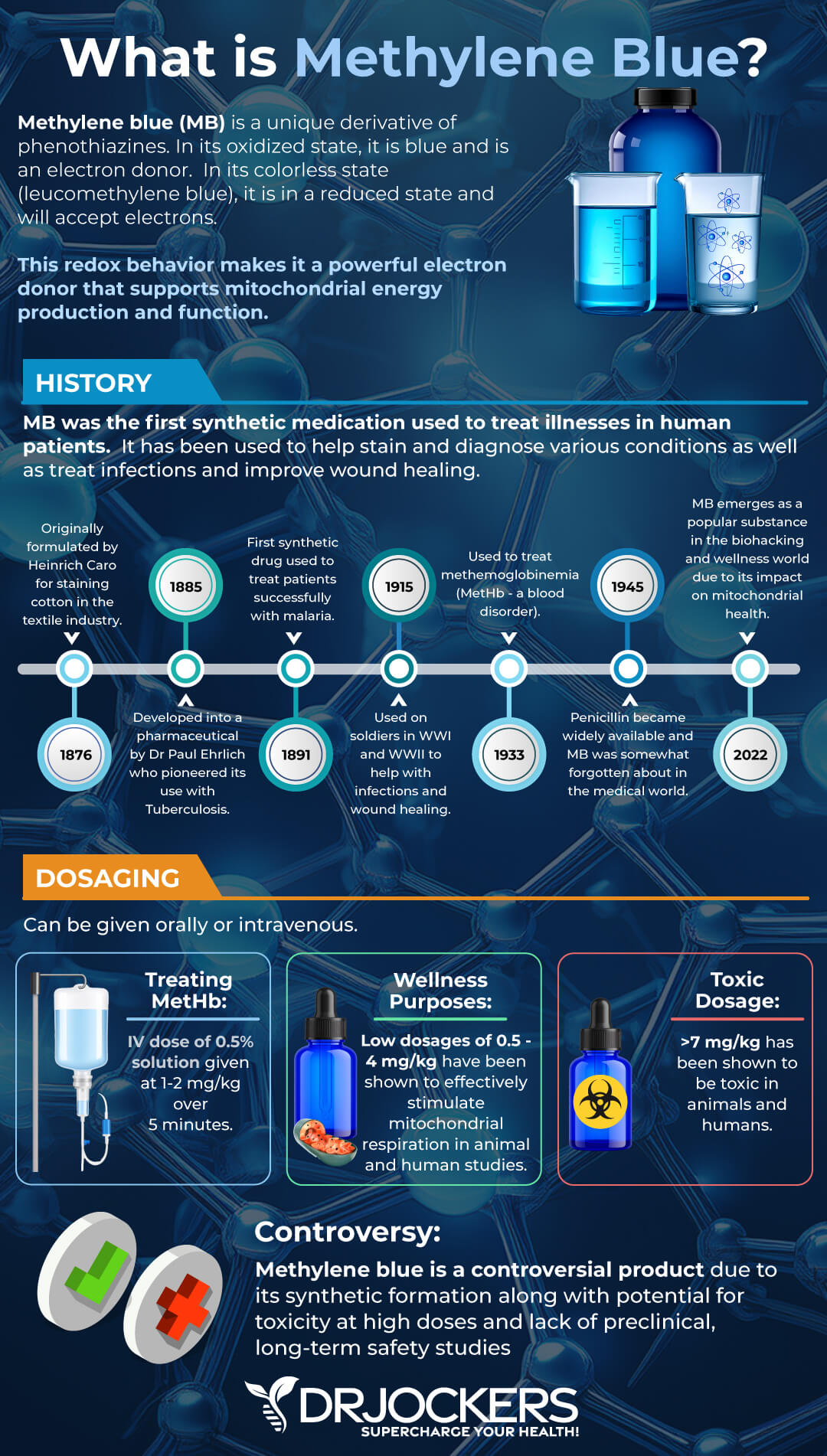
What is Methylene Blue?
Methylene blue is a versatile synthetic compound. It has been used for various applications in medicine, from using it as a diagnostic dye to as a medication for methemoglobinemia (1, 2). Methylene blue was originally created as a dye. It was used for a variety of industrial processes, including as a textile dye and staining agent used in chemical and biological experiments.
Methylene blue is also known as an electron donor. It cycles between its oxidized form, which is blue, and its reduced form, which is colorless or leucomethylene blue. In its reduced form, methylene blue can donate electrons to other molecules, and in turn, it will become oxidized in this process.
This redox behavior makes it possible for methylene blue to participate in studies that look at electron transport and cellular respiration by supporting the movement of electrons in biochemical reactions.
Researchers discovered that it can be used for medical applications, including treating malaria and other infections, methemoglobinemia, and neurological issues, amyloid binding in Alzheimer’s disease, helping to identify and remove polyps, supporting mitochondrial function, cellular rejuvenation, and anti-aging (1, 4, 15, 16, 19). Because of its promising effects for anti-aging and cellular rejuvenation, it has also been used as a supplement to maintain health and youthfulness.
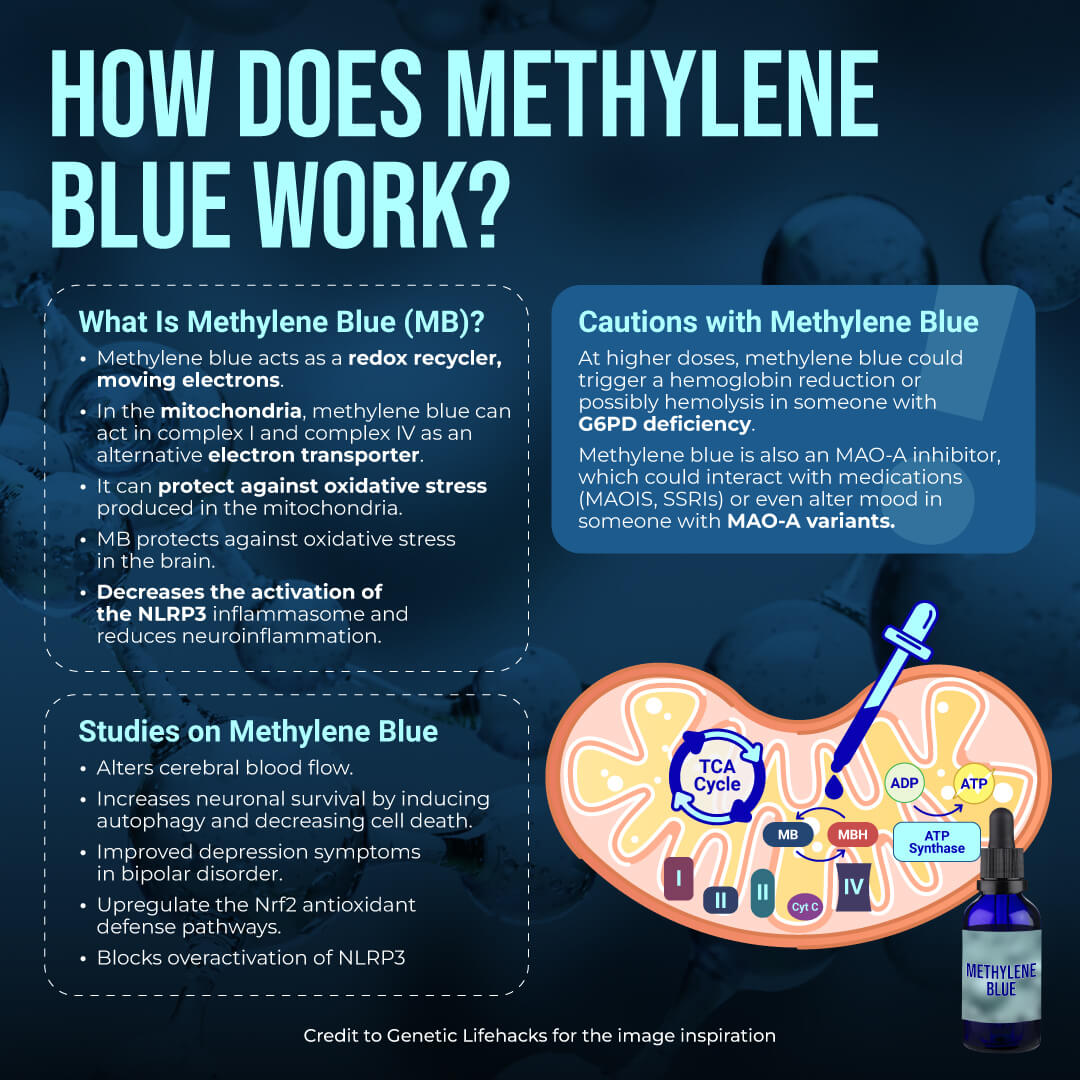
Methylene Blue’s FDA-Approved Uses
Methylene blue is currently approved for treating methemoglobinemia. Methemoglobin is a type of hemoglobin that, instead of its normal ferrous (Fe²⁺) state, contains iron in the ferric (Fe³⁺) state. This type of iron is unable to carry oxygen effectively, which can result in the reduction of oxygen delivered to the tissues.
Methemoglobinemia is a blood disorder in which there is too much methemoglobin present in the blood. Methylene blue can decrease methemoglobin back to functional hemoglobin, which can help to restore oxygen delivery and improve methemoglobinemia (1, 5, 6).
Additionally, the label methylene blue can be used for a variety of things. Methylene blue can be used as a surgical dye to stain tissues and identify various problems in sentinel lymph nodes and as a diagnostic dye to visualize fistulas and leaks in certain medical conditions and diagnose certain cancers.
Methylene blue can be adsorbed quickly and in larger amounts in rapidly growing cancer cells, so it may help to diagnose certain cancers, especially cancer affecting the lymph nodes, parathyroid glands, and gastrointestinal tract (7, 8, 9).
It may be used as a urinary antiseptic in combination products to prevent urinary tract infections (UTIs) (10). It may be used to help the treatment of malaria (11). It may also help to treat nail fungus that hasn’t responded to other methods through the combination of methylene blue dye and photodynamic therapy (12). It may also be used for the diagnosis of vasoplegic syndrome and ifosofamide-induced encephalopathy off-label (13, 14).
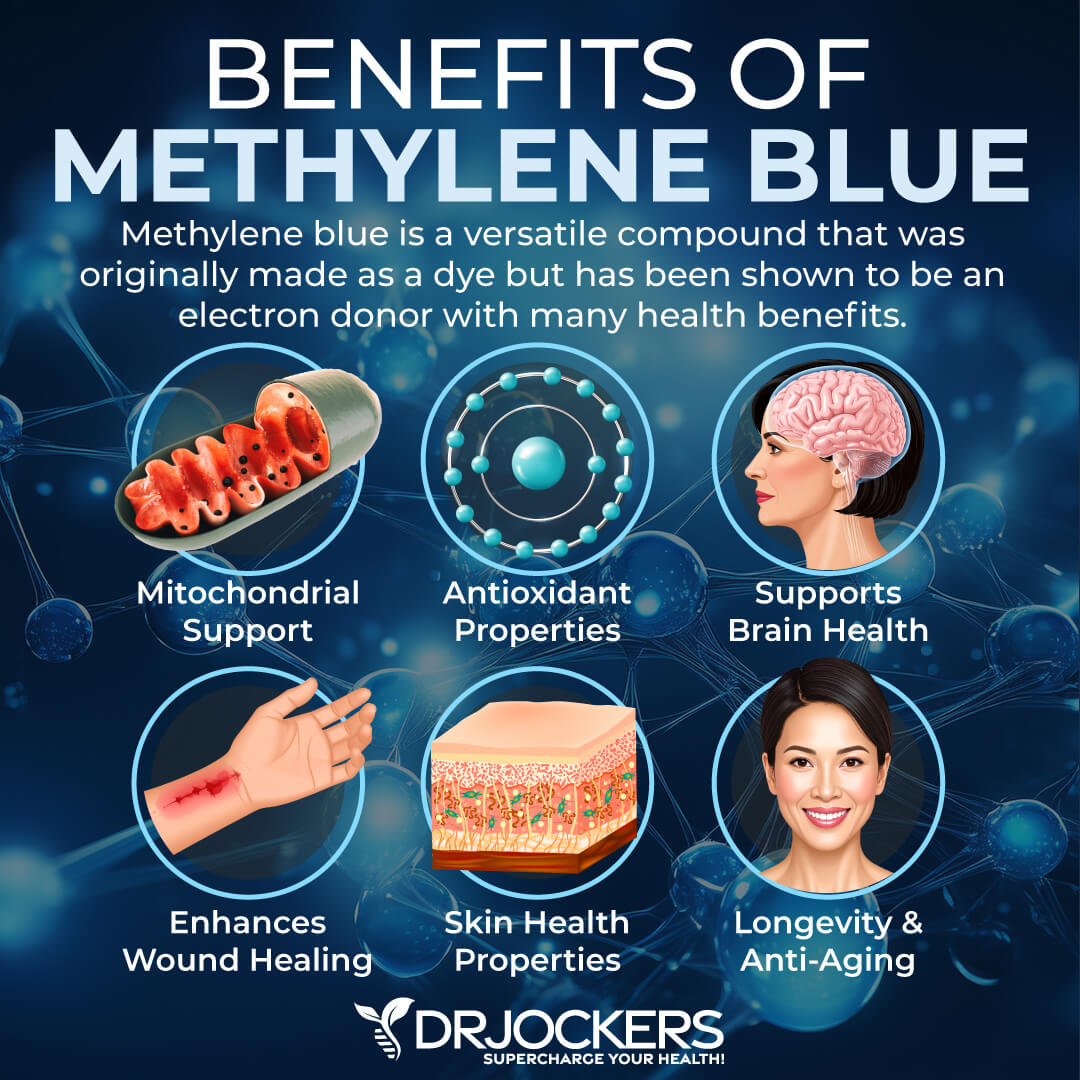
Methylene Blue Benefits
Let’s look at the benefits of methylene blue.
Mitochondrial Support
A 2018 research paper published in Molecular Neurobiology has explored the potential role of methylene blue as a great compound for supporting mitochondrial function (15). As we discussed earlier, it acts as an electron donor in the electron transport chain. It can help to move electrons to cytochrome c while bypassing damaged or inhibited complexes I-III.
Through this action, methylene blue can help to restore or improve ATP energy production even if some parts of the electron transport chain are damaged. Thus, methylene blue may improve mitochondrial respiration, increase cellular energy, and lower oxidative stress.
By improving cellular resilience, restoring energy metabolism, and reducing mitochondrial dysfunction, methylene blue may help reduce brain fog, cognitive issues, neurodegenerative diseases, and other health issues related to mitochondrial damage.
According to a 2020 study published in Translational Neurodegeneration, the combination of methylene blue and photobiomodulation may be particularly beneficial for antioxidant and anti-inflammatory effects, reducing oxidative damage, improving mitochondrial dysfunction, and supporting brain health (16).
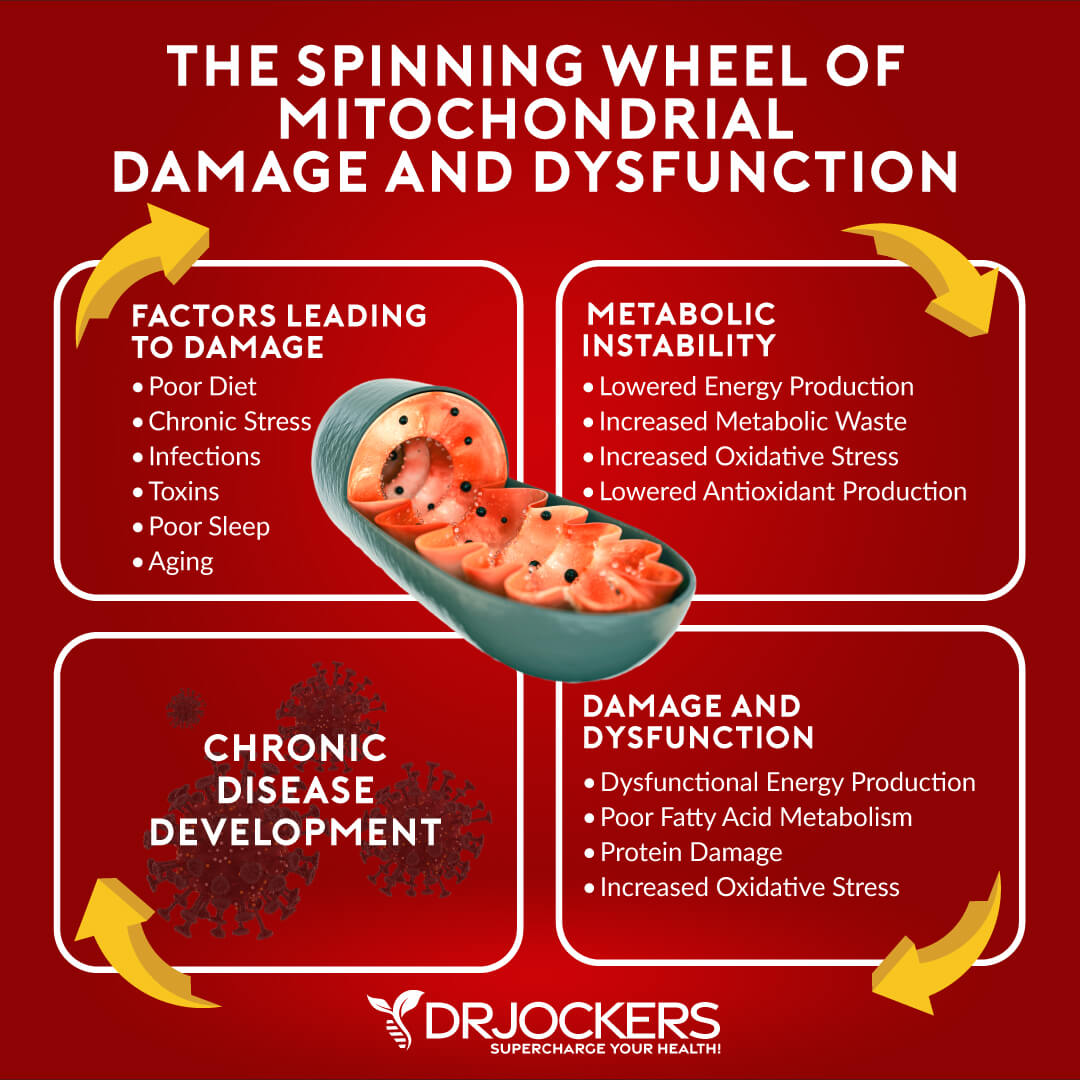
Antioxidant Properties
One of the potential benefits of methylene blue is its antioxidant properties, which may help to protect your cells from oxidative stress. For example, according to a 2023 study published in the International Journal of Molecular Sciences, methylene blue may improve antioxidant defense and mitochondrial DNA (mtDNA) respiration and reduce mtDNA damage in renal toxicity from cisplatin, a platinum-based cytostatic drug used for cancer treatment (17).
Methylene blue can cycle between its oxidized and reduced forms. As a result, it may help to neutralize reactive oxygen species (ROS) and reduce oxidative damage to mitochondrial protein, lipids, and DNA. It can help to maintain redox balance within the cells and preserve the need for natural antioxidant systems in the body. It may help to support superoxide dismutase (SOD) antioxidant enzyme.
Through all these actions, methylene blue may help to fight oxidative damage and related health issues, such as inflammation, neurodegeneration, and accelerated signs of aging. I will touch on these effects in the next section, but for example, according to a 2017 study published in Science Reports, the antioxidant benefits of methylene blue may help to support skin longevity and reduce signs of aging (18).
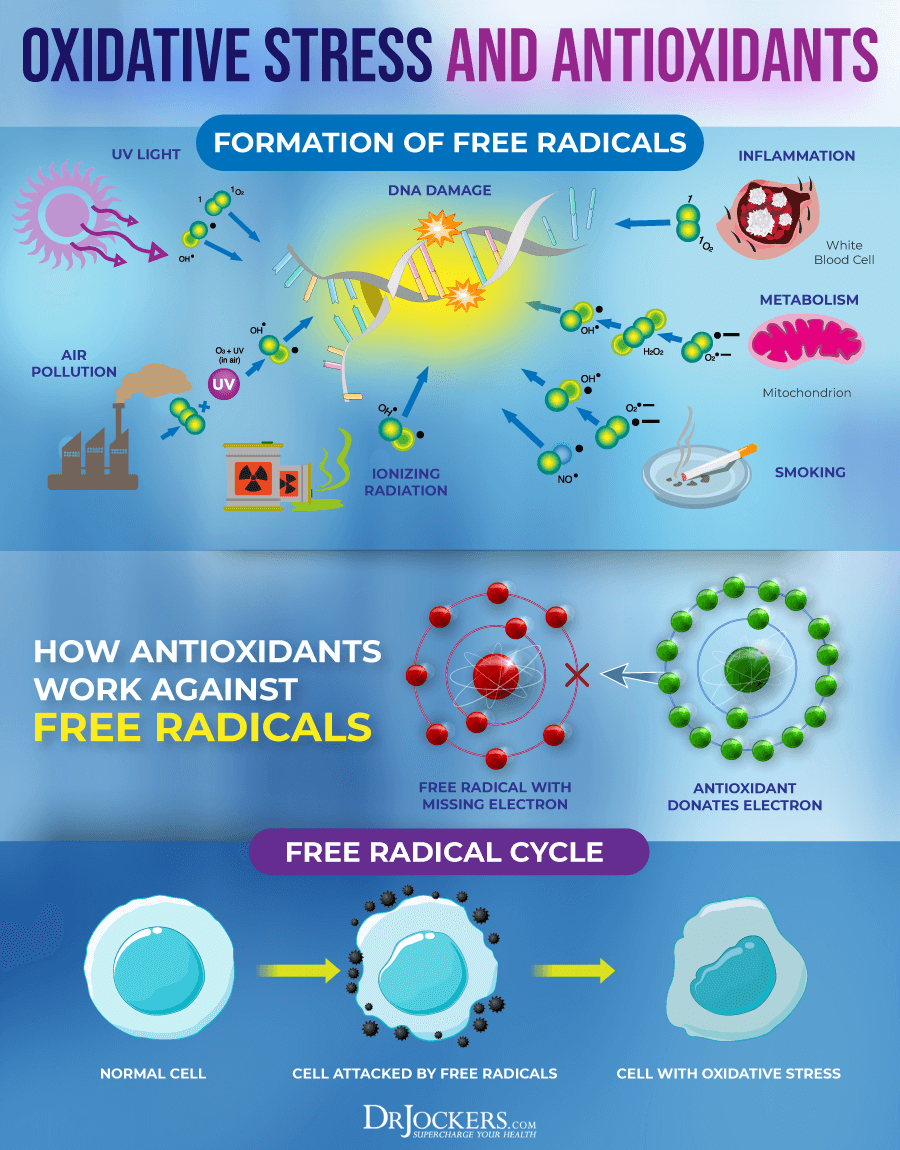
Neuroprotective Properties
Because of its ability to lower oxidative stress, improve mitochondrial function, and aid cellular energy in brain cells, methylene blue also offers potential neuroprotective benefits. Bypassing damaged particles in the electron transport chain helps the body to preserve ATP energy production and reduce issues we see in neurodegeneration.
It may help to decrease beta-amyloid, tau, and other toxic protein buildup, which can contribute to Alzheimer’s disease. It may also aid neurotransmitter balance, neural membrane function, cognitive performance, and memory, and reduce neurological and cognitive decline.
A 2018 study published in Molecular Neurobiology has found that methylene blue may offer mitochondrial protection in the brain that may help to reduce neurodegeneration and mitigate brain-related issues, including stroke, global cerebral ischemia, Alzheimer’s disease, Parkinson’s disease, and traumatic brain injury (19).
According to a 2015 study published in Frontiers in Cellular Neurosciences, the combination of low-dose methylene blue and near-infrared light may reduce neurodegeneration (20). A 2020 study published in Translational Neurodegeneration has also found that the combination of methylene blue and photobiomodulation may be particularly beneficial for brain health and reducing neurodegeneration (16).

Wound Healing Properties
Methylene blue offers anti-inflammatory, antimicrobial, and mitochondrial-supporting properties, which may support wound healing. By fighting microbes, it may reduce the risk of infections in wounds. By improving cellular energy production, it may also support tissue repair.
Methylene blue may also improve cellular regeneration of the skin and collagen synthesis by improving mitochondrial function, decreasing oxidative stress, and reducing inflammation. Combining with red light therapy may further accelerate tissue repair and reduce scarring. According to a 2022 case report, methylene blue photodynamic therapy may help to improve chronic wounds (21).
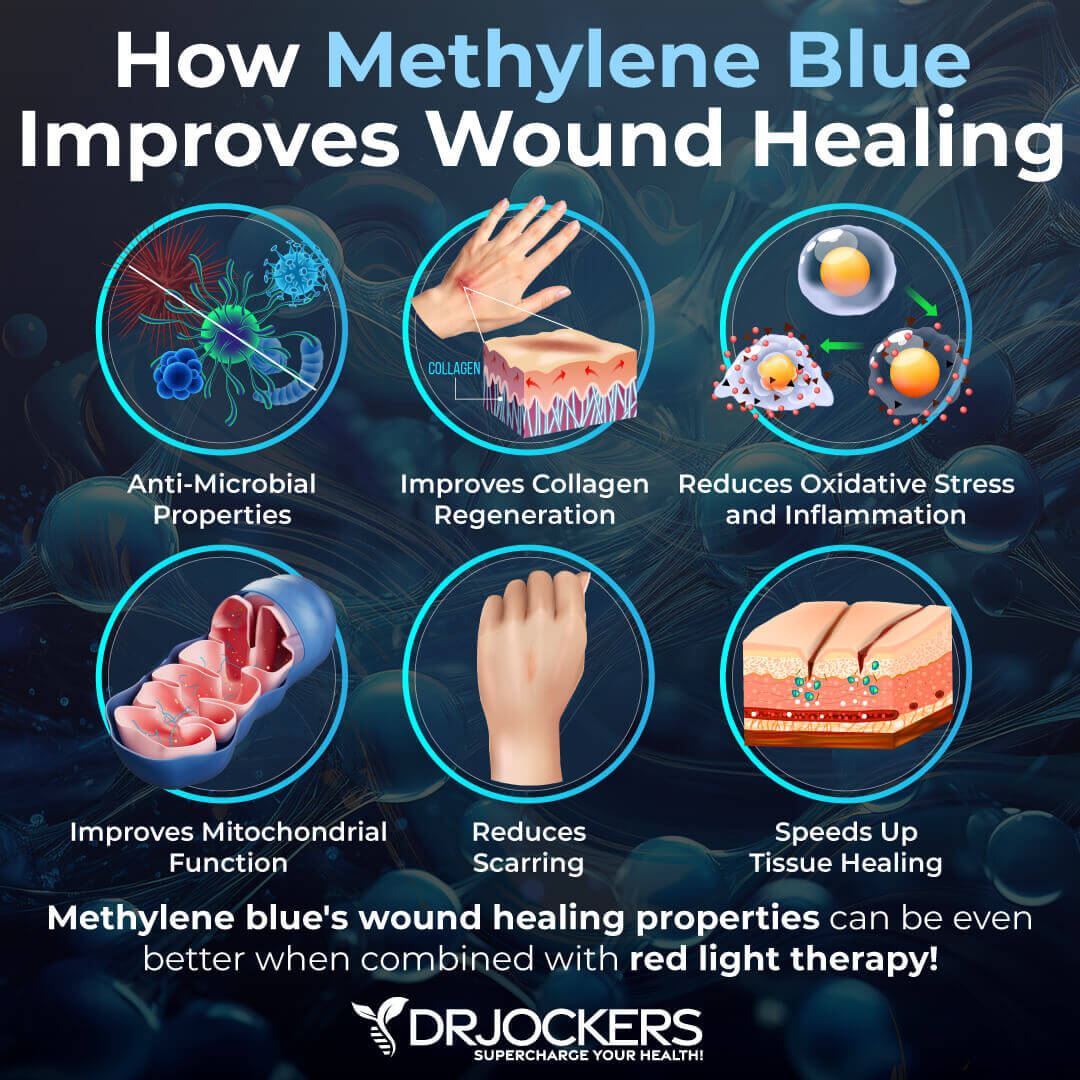
Skin Health Properties
Methylene blue may be great for overall skin health for similar reasons we discussed under wound healing. It helps to decrease oxidative stress, improve mitochondrial function, support collagen production, and aid cellular rejuvenation, which can all support healthy skin. Its antioxidant properties may help to reduce signs of premature aging and environmental damage.
Supporting cellular energy production can improve skin cell repair and regeneration. It may help to improve the hydration, elasticity, and thickness of the skin and may help to reduce acne, skin infections, and signs of aging. A 2017 study published in Science Reports has found that the antioxidant benefits of methylene blue may help to support skin longevity and reduce signs of aging (18).
According to the study, methylene blue may be more effective than other skin-targeting antioxidants in improving skin fibroblast proliferation and reducing cellular senescence. It may help to upregulate elastic and collagen levels, improve skin hydration, support dermis thickness, and improve overall skin quality.
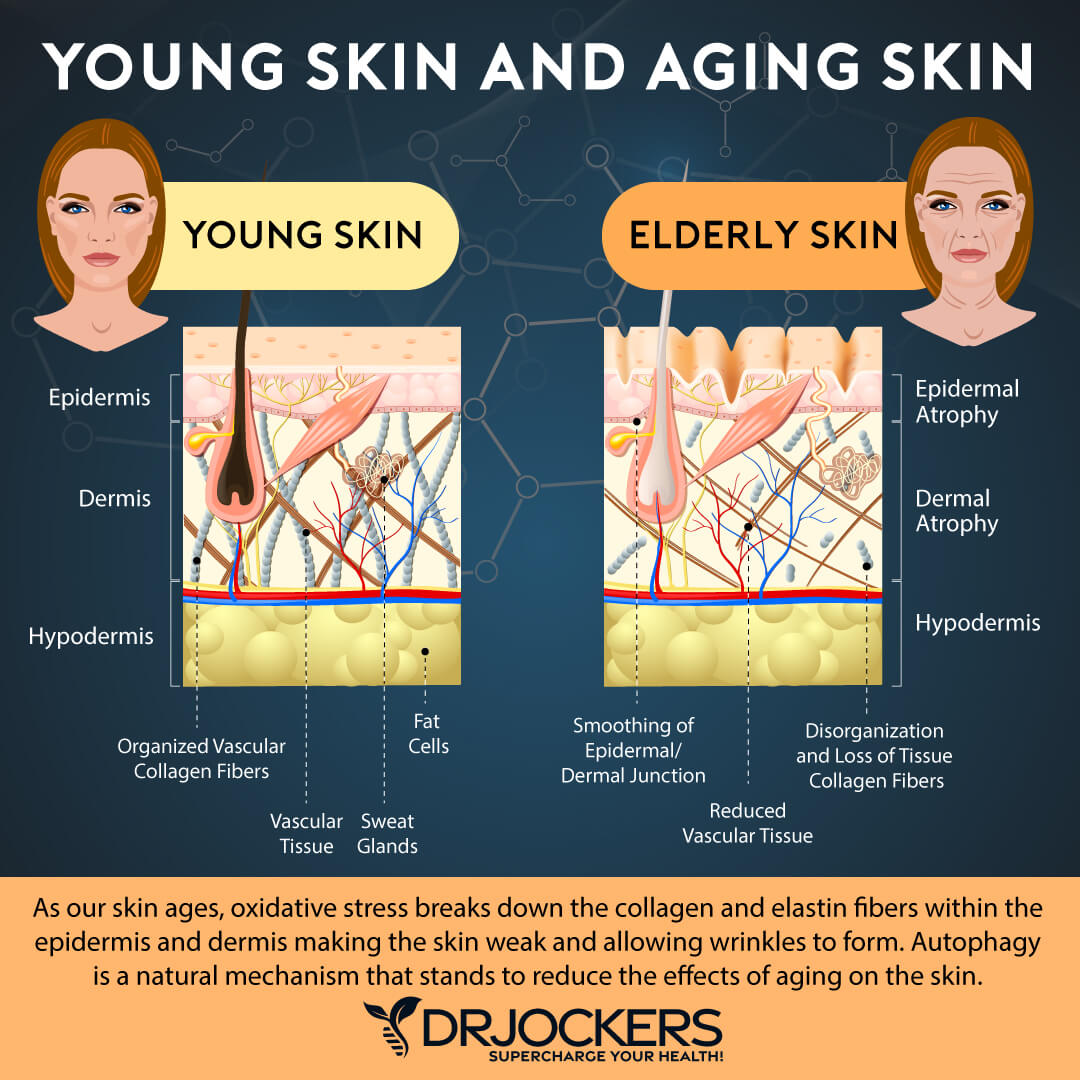
Longevity & Anti-Aging
Finally, methylene blue may offer great benefits for longevity and anti-aging. It does this through supporting mitochondrial efficiency, improving cellular energy production, and lowering oxidative stress levels.
As we discussed before, methylene blue may help to neutralize free radicals that are the key reasons behind cellular aging. Being a powerful antioxidant, it may help to protect your cells from oxidative damage. It may improve cellular resilience, cognitive function, and mitochondrial health.
According to a 2021 study published in Cells, methylene blue may have potential as an anti-aging drug as it may help to reduce oxidative stress and, because of that, reduce the phenotypes related to some age-related conditions (22). It may help to slow skin aging, reduce memory loss and neurodegeneration, and slow progeria, a premature aging disease.
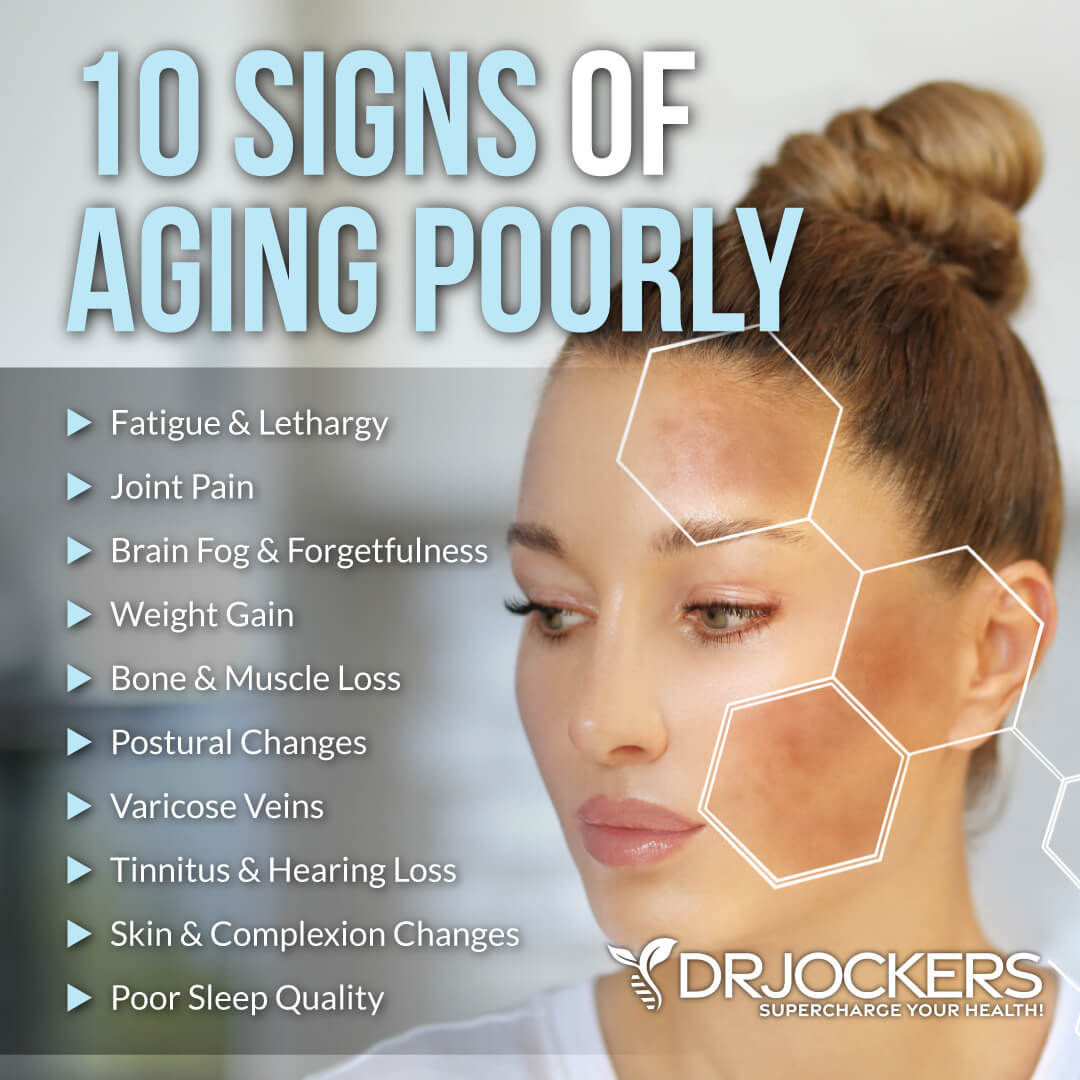
How to Use Methylene Blue
You can use methylene blue as a supplement. It is important that you purchase a pharmaceutical or UPS-grade version to ensure safety and purity. Make sure it is tested for heavy metals and free from them. Avoid any industrial or aquarium-grade methylene blue.
They can contain heavy metals and other impurities, making them unsafe for humans. You can use methylene blue orally, sublingually, and microdose it is depending on your needs. Dosage can range from 0.5 to 4 mg per kilogram of body weight per day, depending on your needs.
Always talk to your healthcare provider for guidance to see what’s appropriate. Start slow with a low dose and monitor your body’s reactions.
A good starting dosage is 15-20 mg. Some clinicians have used 50 mg dosages given twice daily (100 mg overall) to help with Lyme disease and 100 mg dosages given twice daily (200 mg) in the early onset of COVID or the flu to help reduce symptoms and speed up the healing and recovery process. This higher dosage is reduced once the individual feels better.
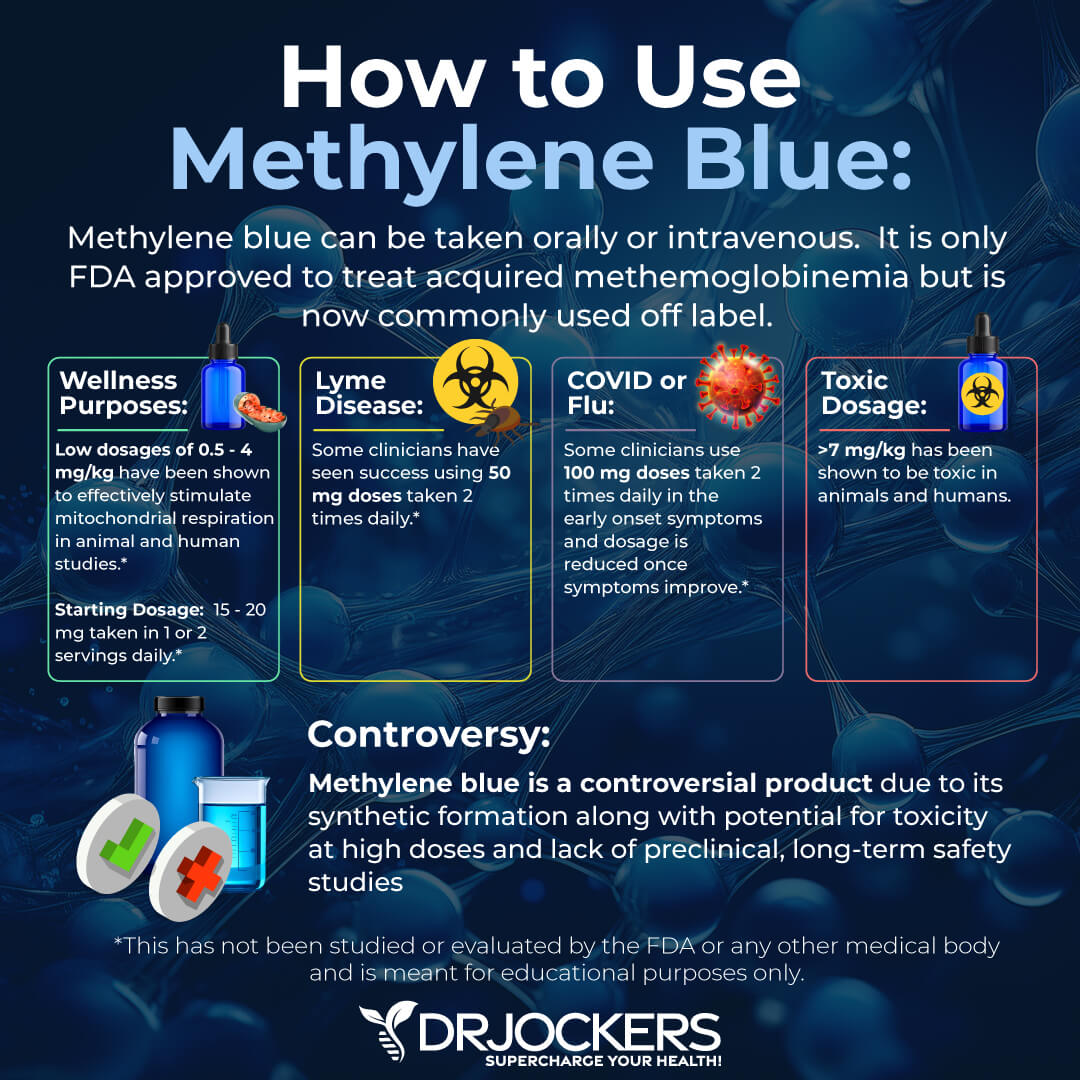
Methylene Blue and Red Light Therapy
Let’s look at how methylene blue and red-light therapy can work together to support your health.
Methylene Blue (MB)
Methylene blue is a redox-active compound. As you learned earlier, methylene blue can serve as an electron donor within the mitochondrial electron transport chain. It can donate electrons, and through this process, it can bypass damaged components of the electron transport chain and restore efficient energy production.
Through this, it can help to improve the reduction of oxygen to water, support oxygen utilization, and improve adenosine triphosphate (ATP) energy synthesis. As a result, it can improve mitochondrial function and benefit health issues related to impaired cellular respiration and oxidative stress.
Red Light Therapy (RT)
I have written about the benefits of red-light therapy on my website many times. Now, I want to touch on how red-light therapy, especially near-infrared (NIR) light therapy, can act as a photon donor. This means that photons can penetrate deep into your tissues and get absorbed by cellular chromophores, especially cytochrome c oxidase in mitochondria.
This process can stimulate the mitochondrial respiration chain, improve ATP production, promote cellular repair, and support cellular regeneration. Red light therapy can decrease inflammation, improve circulation, and support the healing process through photobiomodulation.
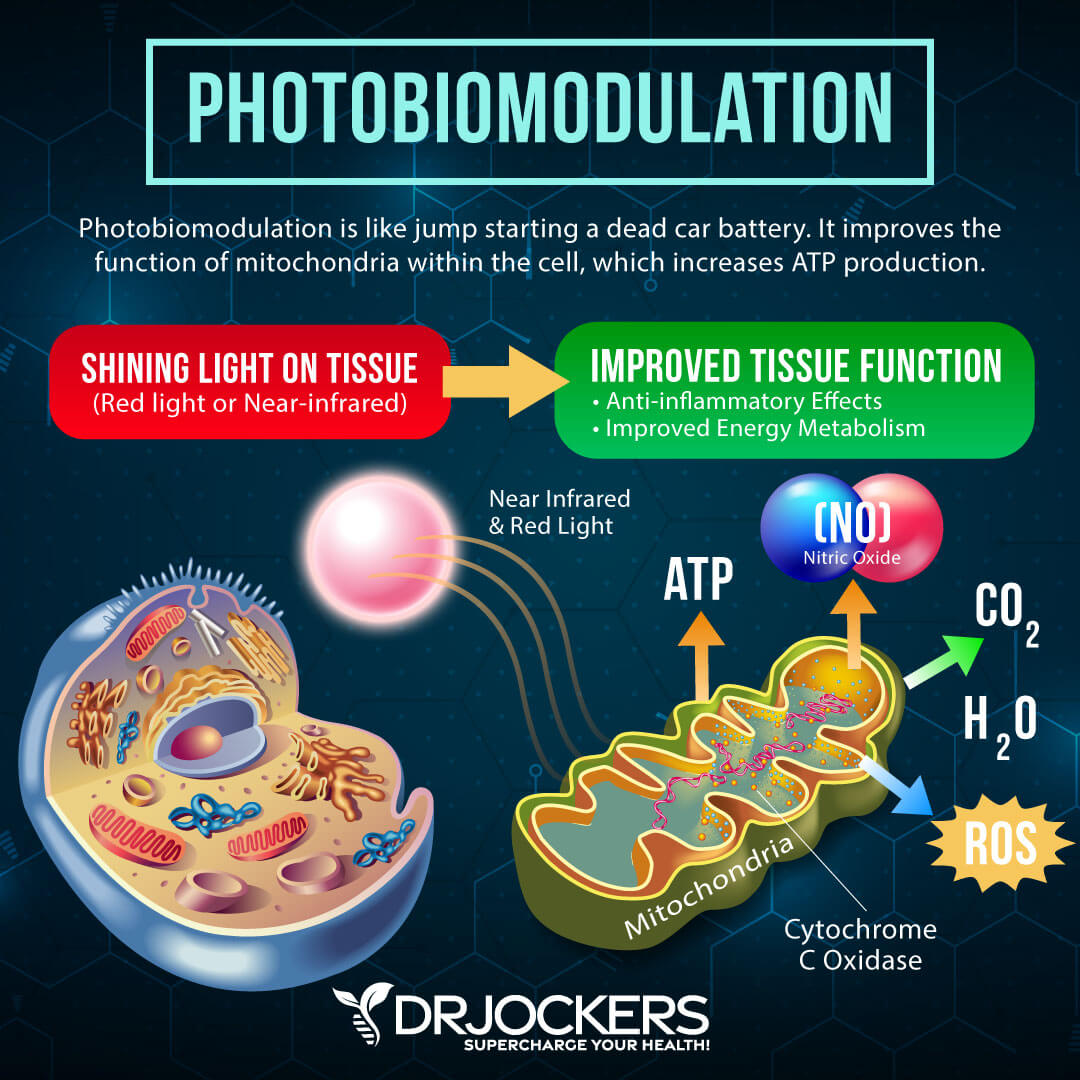
MB and RT Together
Methylene blue and red-light therapy can be used together to offer synergistic benefits. According to a 2020 study published in Translational Neurodegeneration, the combination of methylene blue and photobiomodulation may be a fantastic combination for offering antioxidant benefits, decreasing inflammation, reducing oxidative damage, improving mitochondrial dysfunction, and supporting brain health (16).
2015 research published in Frontiers in Cellular Neurosciences has found that low-dose methylene blue and near-infrared light together may decrease neurodegeneration (20).
Methylene blue can stimulate the mitochondria by donating electrons. Red light therapy can activate the electron transport chain through photonic stimulation. This dual action of the electrical mechanism from methylene blue and the photonic effect from red light therapy can improve mitochondrial output.
This may help to improve energy metabolism, increase cellular performance, and decrease oxidative stress. Combined together, these two therapies may be beneficial for improving chronic fatigue, cognitive support, reducing neurodegeneration, and other health issues.
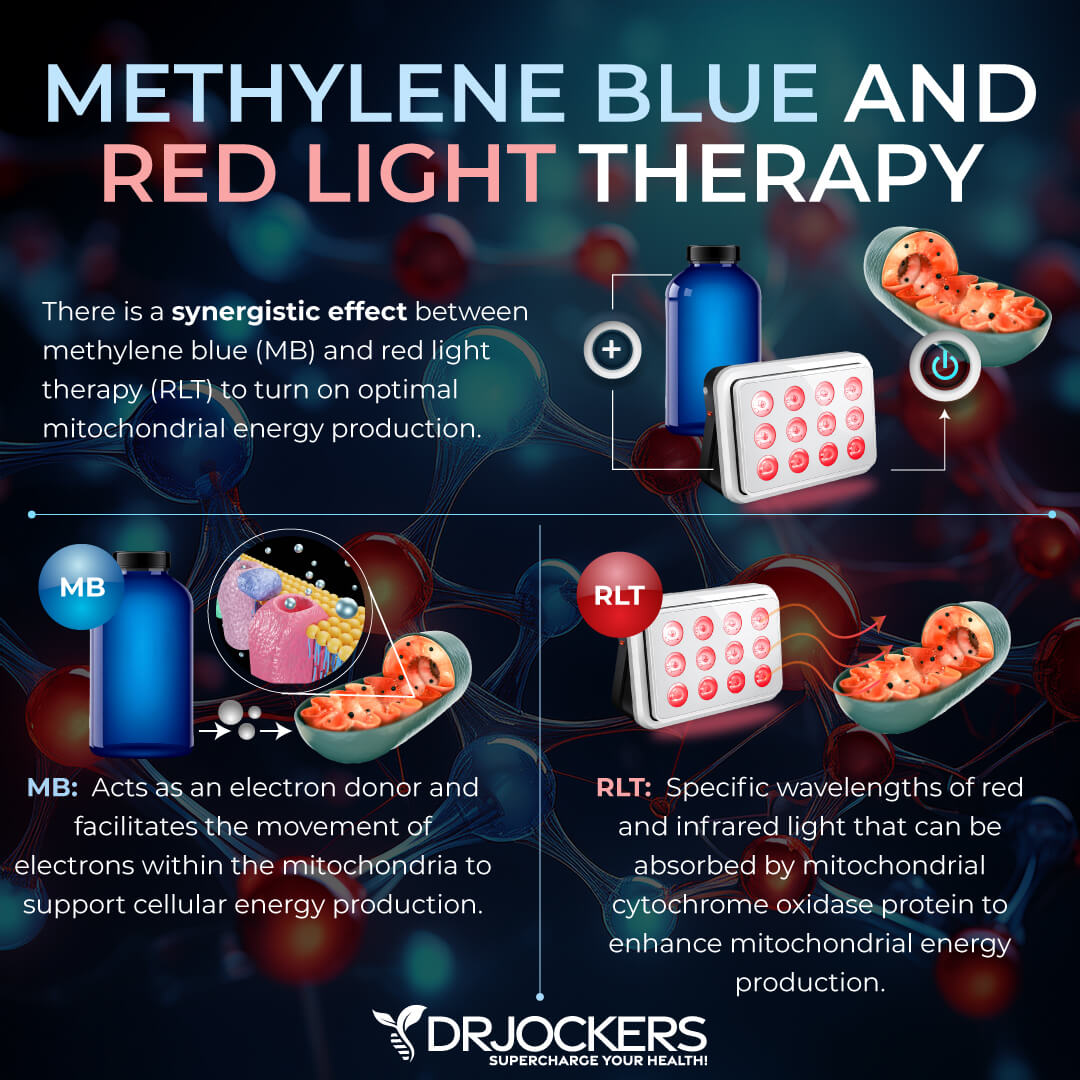
Potential Risks and Side Effects
Methylene blue is generally safe to use as a medication or a supplement. There are some potential risks and side effects you have to consider.
Methylene blue may interact with various antidepressants, including SSRIs and MAOIs, and may cause serotonin overload. If you are taking antidepressants, talk to your doctor before considering using this substance.
Methylene blue may also cause digestive discomfort, stomach upset, or mild nausea, especially in women. It may lead to blue-green urine discoloration; however, this is temporary and generally harmless.
It may lead to allergic reactions, including hives, itching, and difficulty breathing. If you experience any of this, methylene blue should be discontinued and in case of a severe allergic reaction, you need to seek medical help urgently.
Methylene blue may also increase photosensitivity, so it’s recommended to be careful in the sun and wear sunscreen when using it. It may also cause issues and increase symptoms in kidney and liver disease, and should be used with caution or avoided if you have kidney or liver problems.
Moreover, this should be avoided by people with a blood disorder called glucose-6-phosphate dehydrogenase (G6PD) deficiency. This is a genetic condition in which the red blood cells don’t work effectively and when exposed to certain infections, medications, food, or even stress, they can be destroyed.
Methylene blue is among the medications that can cause problems and severe red blood cell breakdown and anemia in G6PD deficiency; thus, it should be avoided.
Methylene blue in patients on MAO inhibitors, or patients taking SSRIs or SNRIs, or dapsone. Finally, methylene blue should be avoided if you are pregnant or breastfeeding.
During pregnancy, it can cause potential harm to the developing baby, and during nursing, it may be transferred through breast milk to the nursing child, so it should be avoided.
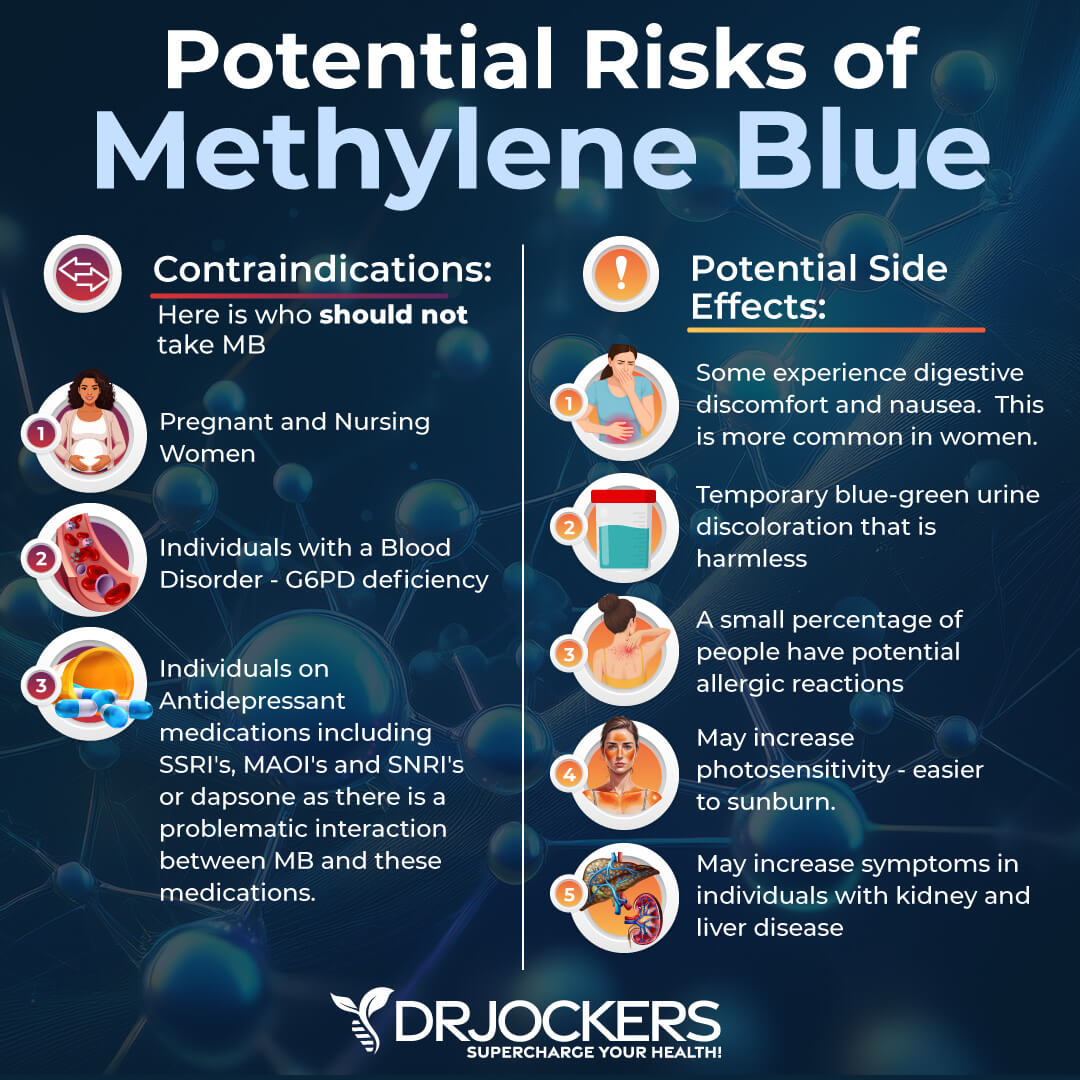
Best Sourcing of Methylene Blue
If you want to use methylene blue for its potential health benefits, I recommend that you buy from a trusted brand that’s sold in a glass bottle and is heavy metal tested. A good brand I recommend is LCG Labs Methylene Blue
This is a 1% methylene supplement. It is made without formaldehyde and alcohol, and a 10 mg dosage is roughly 13-15 drops. It is pharmaceutical grade for humans, tested for heavy metals and other contaminants, and sold in a glass bottle to avoid microplastics.
A good starting dosage for most people is 15-20 mg, which is roughly 20-30 drops of the LCG Labs Methylene Blue. If you are a more sensitive person who has food allergies or sensitivities or has reacted to various supplements or medications in the past, then a good starting dosage would be 5 mg, 2 times daily, to see how you tolerate it before bumping up to 10 mg, 2 times daily.
Some clinicians have used 50 mg dosages given twice daily (100 mg overall) to help with Lyme disease and 100 mg dosages given twice daily (200 mg) in the early onset of COVID or the flu to help reduce symptoms and speed up the healing and recovery process. This higher dosage is reduced once the individual feels better.
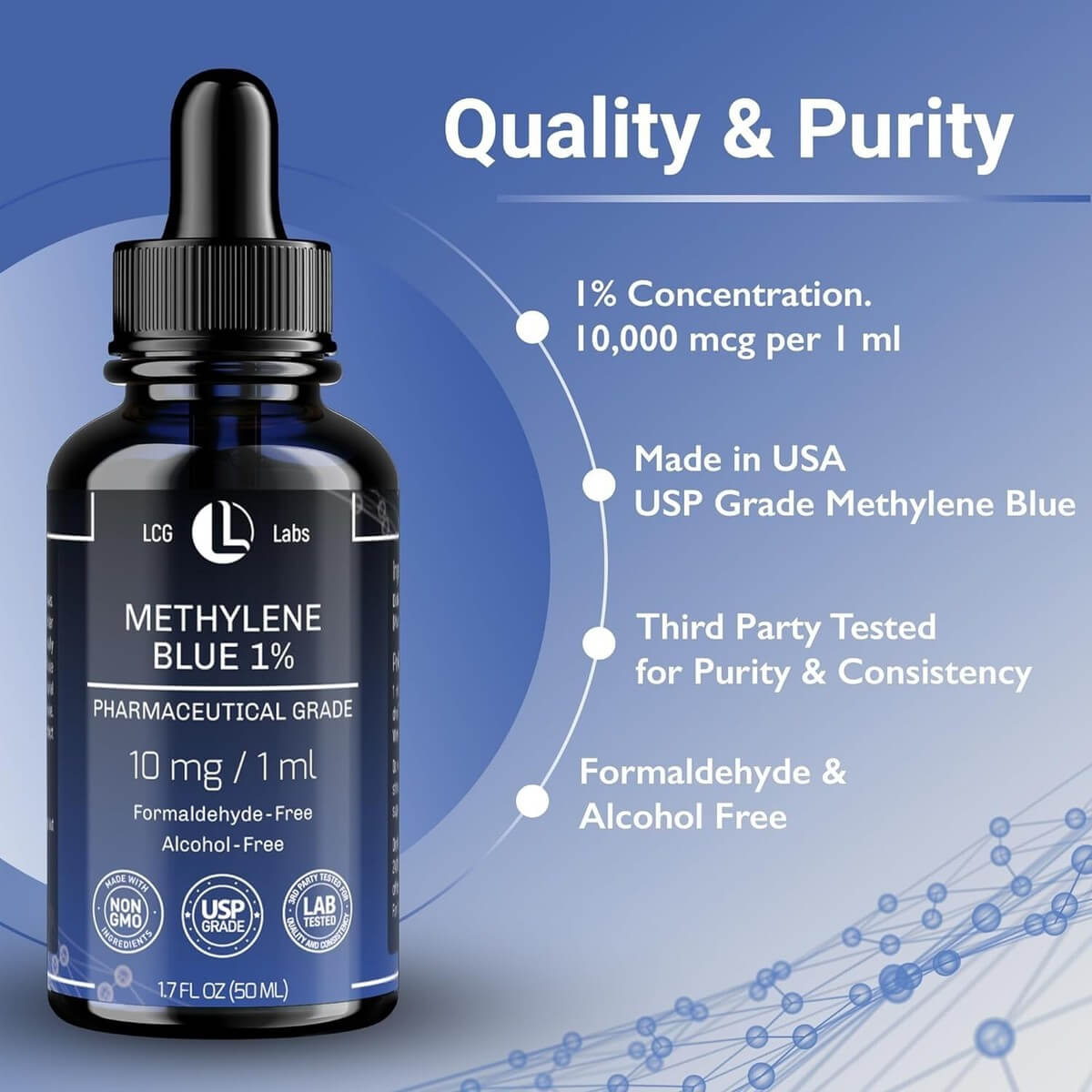
Natural Alternative
Spirulina is a blue-green algae with many natural benefits for your health. It may also serve as a natural alternative to methylene blue because of its potential to affect mitochondrial health and cellular energy.
One of the main components of spirulina is phycocyanin. This is the component that gives spirulina its color, but it is also responsible for spirulina’s anti-inflammatory and antioxidant benefits.
Phycocyanin may also support mitochondrial function by improving cellular respiration and reducing oxidative stress. This is a very similar action to methylene blue’s redox agent effects to support ATP production.
Phycocyanin can also improve superoxide dismutase (SOD) levels, which is an important antioxidant enzyme found in the mitochondria. SOD can help to neutralize superoxide radicals, which are the main cause of oxidative stress in the cell.
Thus, increased SOD activity from spirulina may increase natural antioxidant defense, lower the risk of mitochondrial damage, and improve energy metabolism. It may be a great plant-based, natural option for improving mitochondrial resilience and overall health.
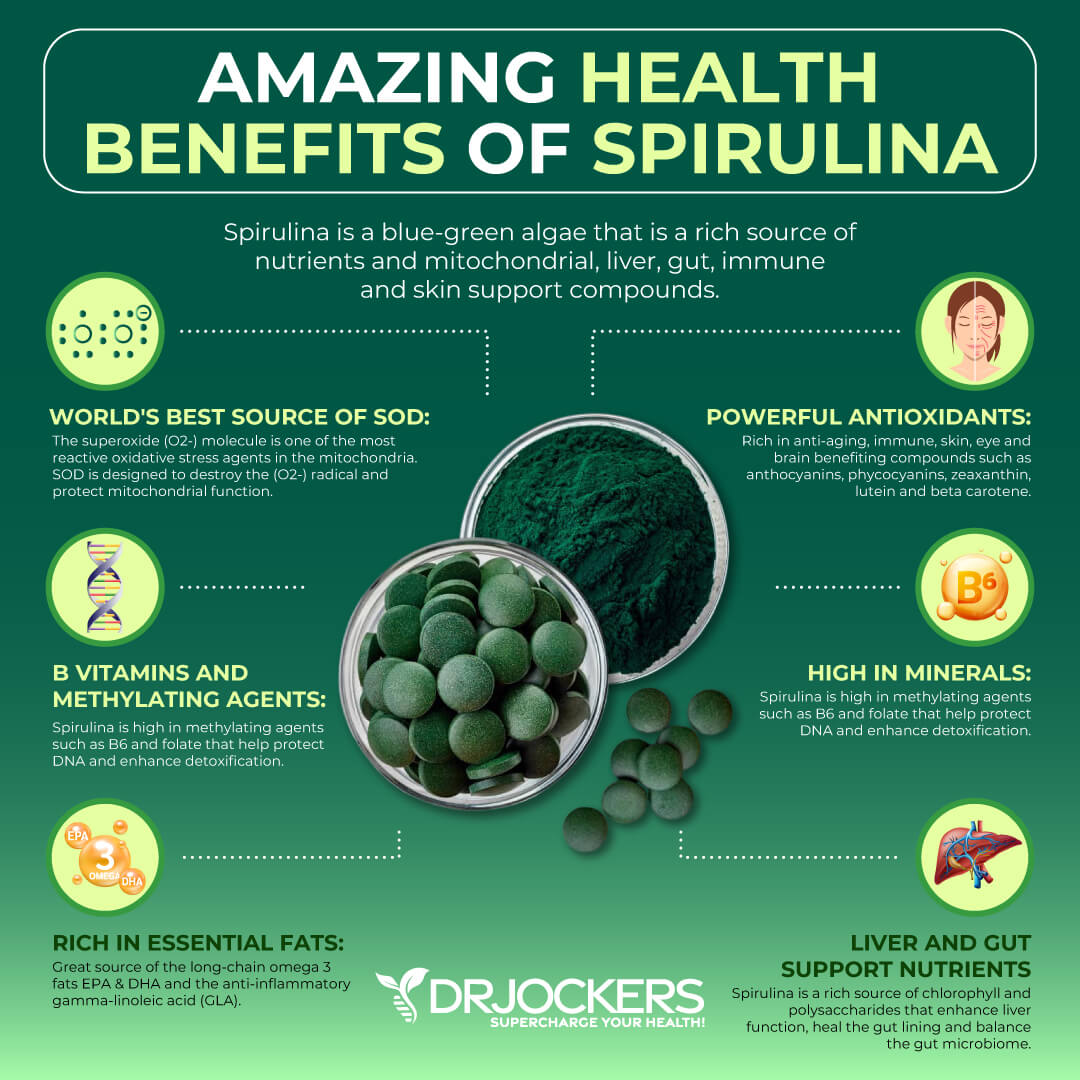
EnergyBits Spirulina
I get my spirulina from ENERGYbits, which has the purest and bioavailable levels of spirulina on the market.
ENERGYbits spirulina may appear more expensive because they prioritize quality and use a unique air-drying process to preserve maximal nutrient bioavailability, which is a different approach compared to many low-priced, high-volume algae companies.
ENERGYbits also emphasizes organic farming and the presence of valuable nutrients and antioxidants in their spirulina. Use the coupon code JOCKERS at checkout with ENERGYbits to save 20% on your order.
Final Thoughts
Methylene blue is a versatile synthetic compound with various applications for chemical and biological experiments, diagnostics, and medical uses. Its potential health benefits include antioxidant support, neuroprotective properties, wound healing, skin health support, longevity, and anti-aging.
I recommend that you follow my tips in this article on how to use methylene blue, how to choose the right product, or how to choose spirulina as a natural alternative to methylene blue.
If you want to work with a functional health coach, I recommend this article with tips on how to find a great coach. We do offer long-distance functional health coaching programs. For further support with your health goals, just reach out and our fantastic coaches are here to support your journey.
Inflammation Crushing Ebundle
The Inflammation Crushing Ebundle is designed to help you improve your brain, liver, immune system and discover the healing strategies, foods and recipes to burn fat, reduce inflammation and Thrive in Life!
As a doctor of natural medicine, I have spent the past 20 years studying the best healing strategies and worked with hundreds of coaching clients, helping them overcome chronic health conditions and optimize their overall health.
In our Inflammation Crushing Ebundle, I have put together my very best strategies to reduce inflammation and optimize your healing potential. Take a look at what you will get inside these valuable guides below!
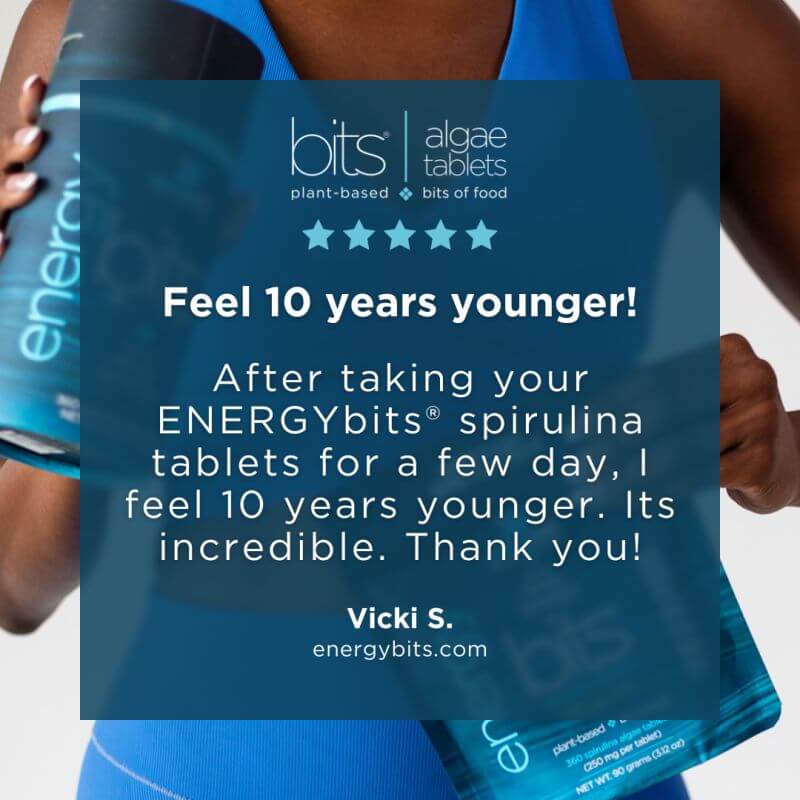




Dr Peter Breggin reports:
Emergency notification: methylene blue is highly neurotoxic to your brain and mind
methylene blue is a Monoamine Oxidase Inhibitor (MAOI). As such, it is one of the most toxic agents ever used in medicine and psychiatry, and the mother of the most dangerous drugs used in psychiatry In reality, methylene blue is a lethal neurotoxin, a poison to the brain. It has the same basic chemical composition and harmful clinical effects as the oldest and most neurotoxic “antidepressants,” the monoamine oxidase inhibitors (MAOIs). It also has similarities to the neurotoxic phenothiazine “antipsychotic” drugs, including the original Thorazine (chlorpromazine), but methylene blue is more stimulating or activating. …………
Thank you for this comment. I agree.
Biology not my strong suit but think I got the gist of it. I’ve been taking Methylene Blue for 3 months now. Seven drops in a cup of hot water with 1/8 tsp of ascorbic acid and a few drops of Ionic minerals electrolytes. It turns a very light blue which I’m wondering if it is the “leucomethylene blue” you speak of. I started taking it due to heavy brain fog, short winded, body pains, and just plain fighting old age (70), cause I still have a 4 hr/day physical & 6 hr desk reports job. Seems to be helping, it’s the only supplement I remember to take after work. I also do the red/IR light and EMF protection, as well as quite the handful of other supplements. I give a nod to the 3 named as really making a noticeable difference. Thanks for your insights. Jim
Is chlorella just as good as spirulina?